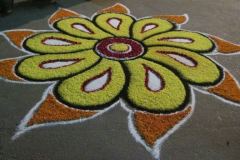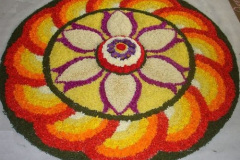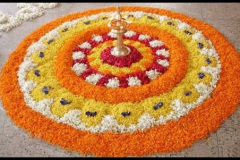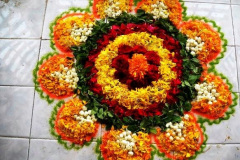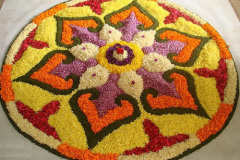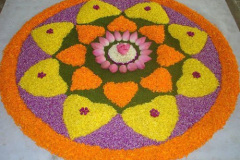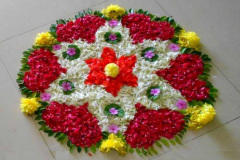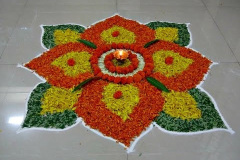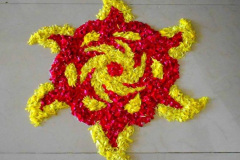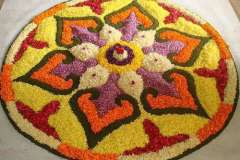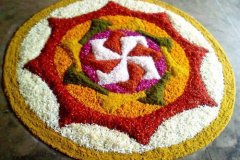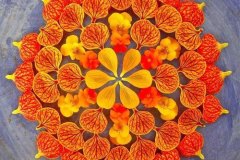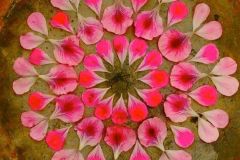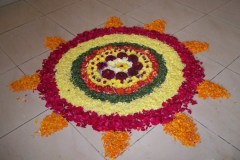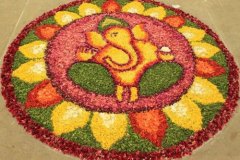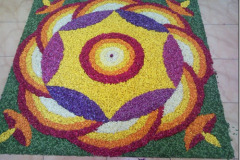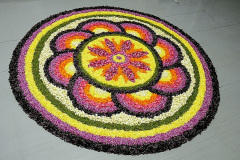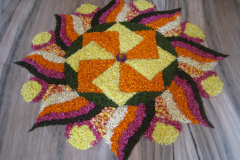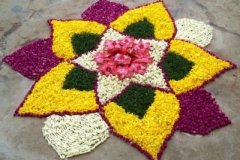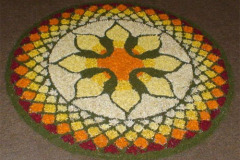
Flower Petal Rangoli Designs
The Art of Flower Petal Rangoli: A Traditional Expression of Beauty and Devotion
Table of Contents
Introduction
Rangoli is a traditional Indian art form that involves creating intricate designs on the ground using natural and colorful materials. Among its many forms, flower petal rangoli stands out for its vibrant use of nature’s palette—fresh flower petals like marigold, rose, jasmine, and chrysanthemum. This natural and fragrant form of rangoli is not only a visual treat but also a symbol of joy, prosperity, and devotion.
Cultural Significance
Flower petal rangoli Designs is most commonly associated with the festival of Onam in Kerala, where it is known as Pookalam. During this harvest festival, people create floral designs at the entrances of their homes to welcome King Mahabali, a mythical figure whose spirit is believed to visit every year. In other parts of India, flower rangolis are made during Diwali, Pongal, weddings, and other auspicious occasions.
Each pattern is thought to bring positive energy and is a gesture of hospitality, inviting harmony and good fortune into homes and sacred spaces.
Design and Materials
The designs can range from easy rounded patterns to highly intricate geometric and symmetrical arrangements. Visual motifs include lotus flowers, peacocks, spirals, and mandalas. Artists typically use petals from:
Marigold (bright yellow and orange),
Rose (red, pink, and white),
Jasmine (white, fragrant),
Chrysanthemum (varied colors),
Hibiscus, dahlias, and leaves for added contrast
In addition to flowers, elements like colored powders (gulal), rice flour, or small diyas (oil lamps) are sometimes added to enhance the design.
The Process :
Making a flower petal rangoli is a thoughtful and creative process:
Planning the Design: Artists often sketch a rough outline with chalk.
Sorting Petals: Flowers are plucked and sorted by types and color.
Laying the Pattern: Petals are carefully placed within the outline, starting from the center and moving outward.
Finishing Touches: Accents like lamps, leaves, or grains may be added to complete the rangoli.
Modern Interpretations Today, flower rangoli has evolved into a versatile art form seen in homes, hotels, temples, and even corporate spaces. It is often featured in rangoli competitions and exhibitions, blending traditional techniques with modern aesthetics. Digital inspirations, stencils, and reusable templates are also popular among newer generations.
